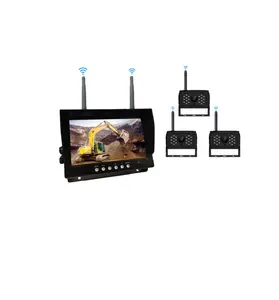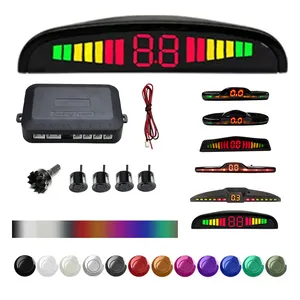
12V HD 1080P 9-Inch Wireless Monitor With 2 Cameras Waterproof Split Screen Reverse Bus RV Car Camera For Trucks















Car reverse sensors are integral components designed to assist drivers during reversing maneuvers. These systems, often consisting of a combination of audio and visual alerts, are engineered to detect obstacles that may not be immediately visible to the driver. The technology behind these sensors has evolved to cater to various vehicle types and driving conditions, enhancing safety and convenience.
Diverse in their construction, car reverse sensors can range from basic audio alert systems to advanced setups with ultrasonic capabilities. The simpler models emit a series of beeps that increase in frequency as the vehicle nears an obstruction. More sophisticated versions utilize ultrasonic sensors, projecting the vehicle's distance from obstacles onto LED displays or screens within the car, providing a clear visual cue alongside auditory warnings.
The primary application of car reverse sensors is to aid in parking and reversing. They are particularly beneficial in tight spaces where the driver's view is limited. These sensors not only contribute to preventing minor collisions but also play a crucial role in enhancing road safety. By alerting drivers to unseen hazards, they help in avoiding potential accidents, thereby protecting the vehicle from damage and reducing the likelihood of costly repairs.
When selecting a car reverse sensor, it is essential to consider the compatibility with the vehicle's make and model. Drivers should also reflect on their driving habits and conditions they frequently encounter. For instance, those regularly parking in congested urban areas may benefit from a sensor with a high degree of precision and visual aids.
The construction of car reverse sensors typically involves robust materials capable of withstanding various weather conditions. The sensors must be sensitive enough to accurately detect obstacles yet durable enough to last the vehicle's lifetime without frequent maintenance.
While considering a car reverse sensor, it is advisable to understand the installation process. Compatibility with the vehicle ensures a seamless integration, allowing drivers to rely on the sensor's functionality without interference with the car's aesthetics or design.
car reverse sensor parking sensors vehicle safety ultrasonic sensors audio alert systems